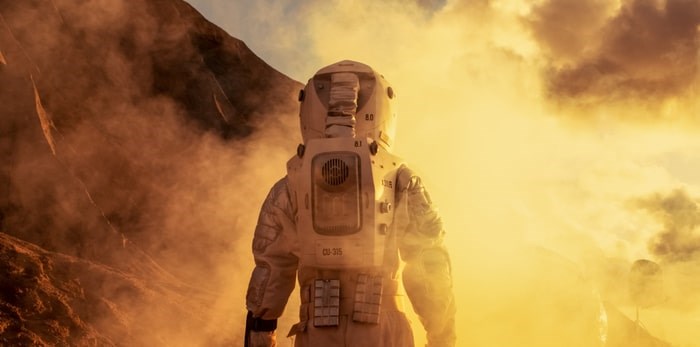An all-Canadian research team led by a B.C. neuroscientist is spending a week in a simulated Mars habitat in Hawaii in hopes of solving a problem for NASA.
The researchers are testing technology that they believe could become a reliable way to measure an astronaut’s brain function during space missions.
Beyond just asking astronauts how they’re doing, NASA doesn’t have a way to determine if people on long missions are feeling depressed, stressed, cognitively impaired or mentally tired, said Olav Krigolson, a neuroscientist and associate director of the University of Victoria’s Centre for Biomedical Research, who is co-leading the mission. Krigolson and the team of scientists are hoping to change that.
“This is an objective way to peer inside someone’s brain,” Krigolson said of the technology they’re testing.
The team of six scientists from UVic, the University of British Columbia-Okanagan, the University of Calgary and the University of Hawaii will wear headbands that monitor changes in their memory, decision-making, learning, attention and perception.
“If we see changes in the scores, that might tell us that someone’s getting mentally tired or they’re getting depressed or they’re getting stressed,” Krigolson said.
 B.C. neuroscientist Olav Krigolson is spending a week in a simulated Mars habitat in Hawaii. (via Olav Krigolson)
B.C. neuroscientist Olav Krigolson is spending a week in a simulated Mars habitat in Hawaii. (via Olav Krigolson)Being able to assess an astronaut’s brain health would mean being able to make adjustments to avoid dangerous burnout on long space missions.
The headband the team is using is commercially available, but Krigolson figured out that the technology could be used to measure brain health. He developed an algorithm that he has used to track concussions, dementia and Alzheimer’s disease.
He has already taken the technology to the emergency room at Royal Jubilee Hospital to test fatigue in doctors and nurses, and to a mine in northern B.C. for similar tests.
The team entered the Mars simulation habitat on Dec. 1 after a couple of training days to learn how the habitat works, prepare for potential emergency situations and practice walking in a spacesuit.
The dome where six people will spend the week is about 12 metres in diameter, Krigolson estimated, and built to NASA standards. It’s located in a volcanic field in a remote part of Hawaii’s Big Island.
The dome has a kitchen, where they’ll prepare freeze-dried meals, an exercise area where they will do daily, hour-long workouts — as astronauts on Mars would have to do to maintain muscle tone — work stations for research, a bathroom and six small sleeping compartments on an upper level.
To make the simulation realistic, life inside the dome has strict rules. Each team member is limited to eight minutes of shower water for the week — despite the fact that they’re exercising daily and wearing heavy spacesuits when they leave the habitat to explore.
Krigolson is providing daily updates on the mission online, and on Thursday, he said he was more convinced than ever that the technology will prove useful for space exploration.
The team had a surprise evacuation drill on day four that saw all six don space suits and squeeze into a cave formed by hardened lava.
“One of our iPads had a copy of Star Wars on it, so there we were … our research crew, in a lava tube cave, watching Star Wars, in space suits. Now that, I believe, is a fairly unique experience,” Krigolson wrote on his blog.
If the exercise is successful, Krigolson is hoping to put the technology to the test in a longer simulation. “Say for six months or a year,” he said. “And if that works, hopefully it’ll go into space, either as part of the Mars mission or at the International Space Station.”
The team is set to come out of the simulation on Sunday.




